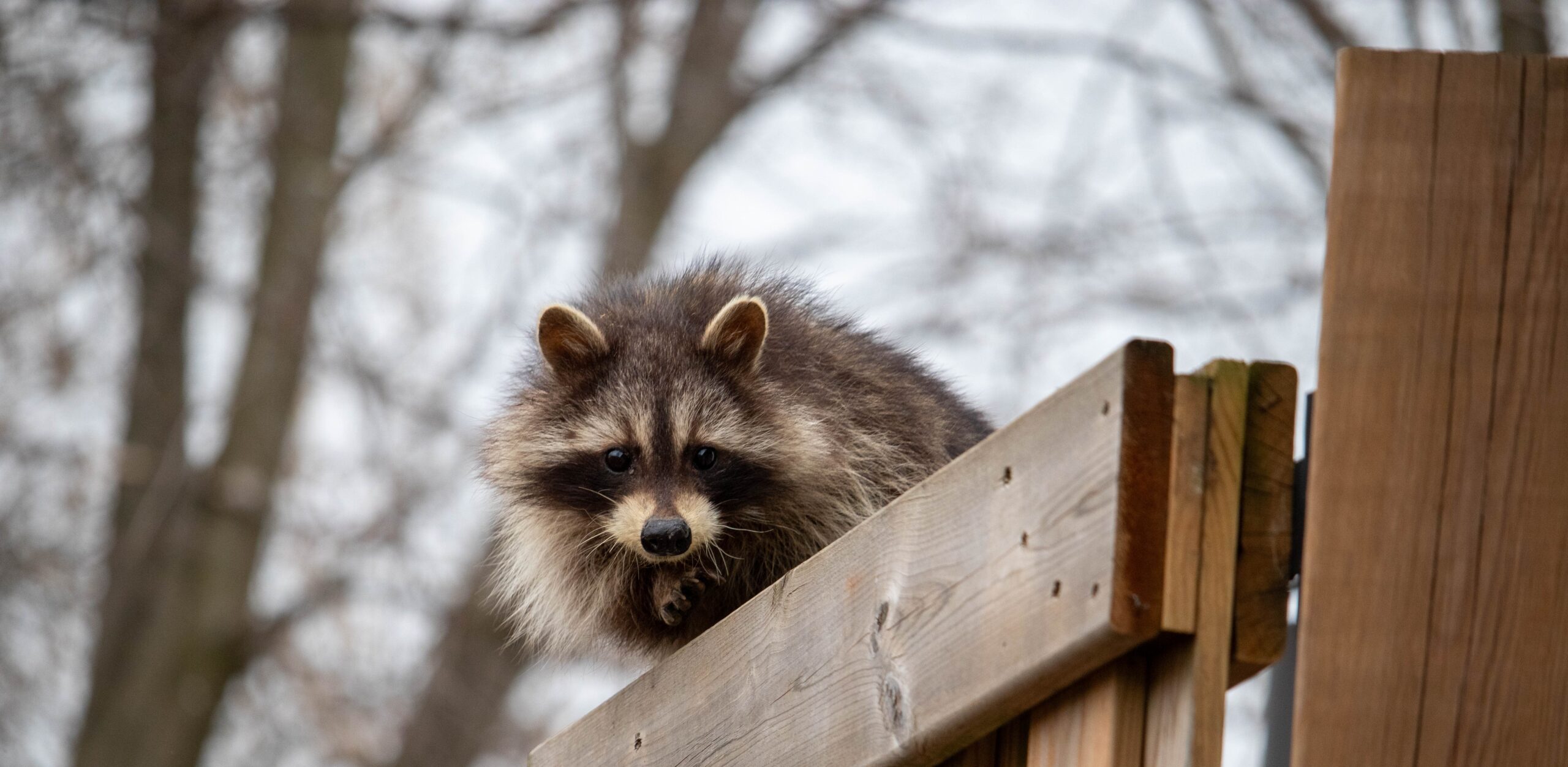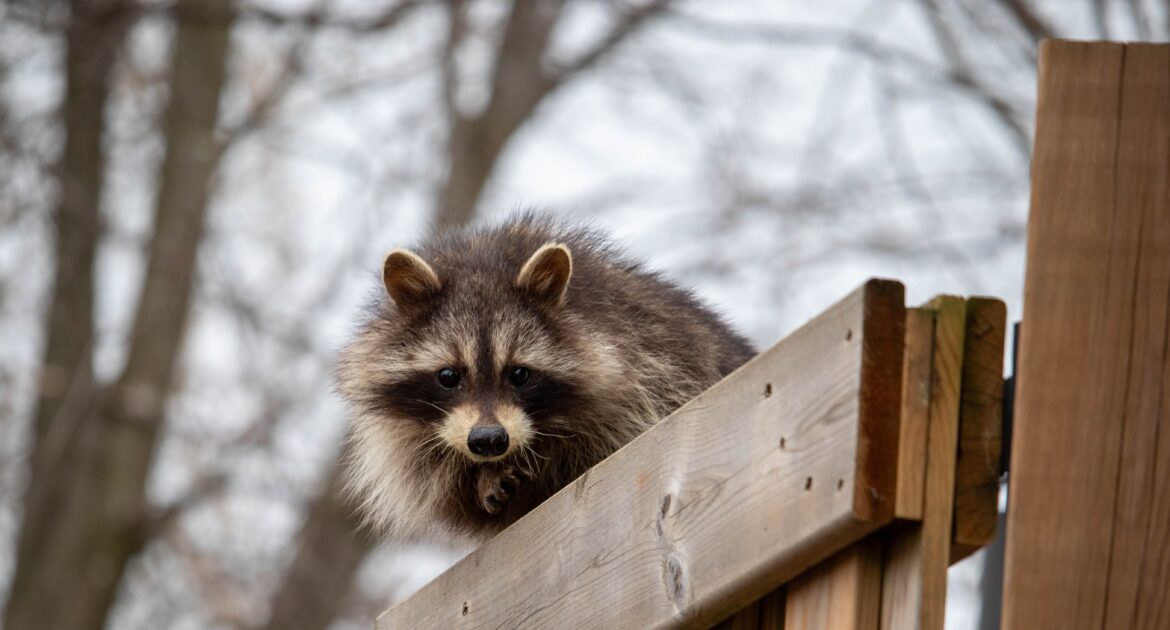Imagine this: It’s late at night, and you hear rustling near your pet door. Upon closer inspection, you discover a raccoon cautiously venturing into your home. For many homeowners, this situation is not only surprising but also a cause for concern. While raccoons may appear charming in their natural habitat, their presence indoors can lead to significant safety, health, and property damage risks. This makes raccoon intrusion prevention an essential consideration for homeowners, particularly in areas like Hamilton, where encounters with wildlife are common.
This guide provides insights into how raccoons gain access to homes and outlines effective prevention strategies to secure your property. If you’re already facing a wildlife issue, remember that professional wildlife removal services in Hamilton, such as Skedaddle Humane Wildlife Control, are readily available to assist.
How Raccoons Find Their Way Into Homes
Raccoons are crafty and resourceful creatures. Equipped with nimble paws and impressive strength, they can manipulate latches, push through openings, and even widen small gaps for entry. Among the most vulnerable features of a home are pet doors, which are often designed with convenience in mind but lack robust security features. For a raccoon, a pet door is an open invitation, especially if it catches the scent of food left just beyond the threshold.
It doesn’t end with pet doors. Raccoons are skilled climbers and can target spots like roof vents, soffits, chimneys, or loose sidings. Damaged or poorly sealed areas around the home are particularly tempting because they present easy access to warmth, shelter, and food. A single vulnerable point is all it takes for a raccoon to make itself at home, and unfortunately, where there’s one raccoon, more may follow.
The Risks of Raccoons Inside Your Home
Once inside, raccoons can cause a surprising amount of damage in a short amount of time. Here are some of the biggest risks homeowners face from raccoon intrusions:
1. Property Damage
Raccoons are naturally curious and persistent. They’ll chew on wires, shred insulation, and tear through wood or drywall while searching for food or building nests. This relentless behaviour can impact your home’s structure, HVAC systems, and electrical components.
2. Health Hazards
Raccoons can carry harmful diseases like leptospirosis and rabies. Their droppings, urine, and nesting materials can contaminate surfaces and spread dangerous pathogens. These health risks are a major reason why homeowners should never attempt DIY removal.
3. Pet Safety
If a raccoon enters through a pet door, it could accidentally confront your dog or cat. These encounters can be dangerous, as raccoons are highly defensive and capable of causing serious injuries to household pets.
4. Nesting and Repeated Visits
Female raccoons may use your home as a nesting site during breeding season, creating secluded dens in attics, crawl spaces, or chimneys. Without proper intervention, these protected nests can result in recurring problems as raccoons return each season.
The risks clearly show that raccoon intrusion prevention isn’t just about protecting your home; it’s also about safeguarding your pets and family.
Key Prevention Tips to Keep Raccoons Out
Preventing raccoon intrusions is essential for maintaining a secure and comfortable home. There are several proactive steps you can take to make your property less appealing to these clever critters.
1. Upgrade Your Pet Door
Replacing your existing pet door with a model designed for security is one of the easiest ways to prevent raccoon access. Consider options with secure locking mechanisms or models that open only for your pet using microchip or collar-activated technology. Also, avoid placing food near pet doors to reduce attraction.
2. Seal Potential Entry Points
Inspect your property for vulnerabilities like gaps in vents, soffits, or shingles. Damage caused by storms or wear and tear often creates weak points that raccoons can exploit. Seal these areas using heavy-duty materials like galvanized steel mesh that raccoons cannot tear or chew through.
3. Secure Chimneys and Vents
Chimneys and attic vents are common entry points for raccoons. Installing wildlife-proof chimney caps and vent covers will block access without interfering with their functionality.
4. Keep Trash Contained
Trash bins are a major attractant for raccoons. Use wildlife-resistant garbage cans with locking lids, and avoid storing bins too close to your home’s access points. Cleaning up leftover food or debris in the yard is equally important.
5. Trim Around Your House
Low-hanging branches and overgrown shrubs near your home make it easier for raccoons to climb onto roofs or gain access to high points. Regular trimming eliminates these natural ladders and helps deter wildlife from targeting your property.
By implementing these measures, homeowners can significantly reduce the likelihood of a nuisance encounter.
Why You Should Avoid DIY Solutions
When faced with a raccoon problem, it might be tempting to try DIY removal methods like traps or repellents. However, these options rarely provide a long-term solution and can often create more problems.
- Limited Effectiveness: Raccoons are intelligent and can outsmart basic traps. Meanwhile, most repellents fail to keep them away permanently.
- Health and Safety Risks: Handling raccoons or their waste without proper gear and training exposes you to serious health hazards.
- Animal Welfare Concerns: Raccoons are protected under wildlife laws in many areas, and improper handling could lead to legal consequences.
Instead, working with a professional team for wildlife removal in Hamilton ensures safe, effective, and humane solutions.
How Skedaddle Protects Your Home
At Skedaddle Humane Wildlife Control, we specialize in wildlife removal services that prioritize both your family’s safety and the well-being of the raccoons. Our process is tailored to address every aspect of the issue, from removal to prevention.
- Thorough Inspections: Our technicians examine your property to identify entry points, nesting sites, and vulnerabilities.
- Humane Removal Methods: We safely remove raccoons without causing harm. Techniques like using one-way doors allow animals to exit your home while preventing reentry.
- Long-term Solutions: After removing the animals, we seal all access points and fortify weak areas using durable materials designed to withstand future attempts.
- Cleanup and Sanitation: Raccoon droppings and nesting materials are biohazards. Our team ensures these contaminants are properly cleaned, leaving your home safe and sanitary.
With over 30 years of experience, Skedaddle is the trusted choice for wildlife removal in Hamilton. Our team works with precision and care to protect your home and restore your peace of mind.
Take Action Today
Don’t wait for raccoons to take over your home through unprotected access points like pet doors. Prevention is the best defense, and when needed, professional help can resolve even the most challenging wildlife issues. Skedaddle Humane Wildlife Control is ready to assist with humane, effective solutions tailored to your needs.
Contact us today to secure your home and learn more about our proven methods for raccoon intrusion prevention. Together, we’ll keep your home safe, clean, and wildlife-free!




